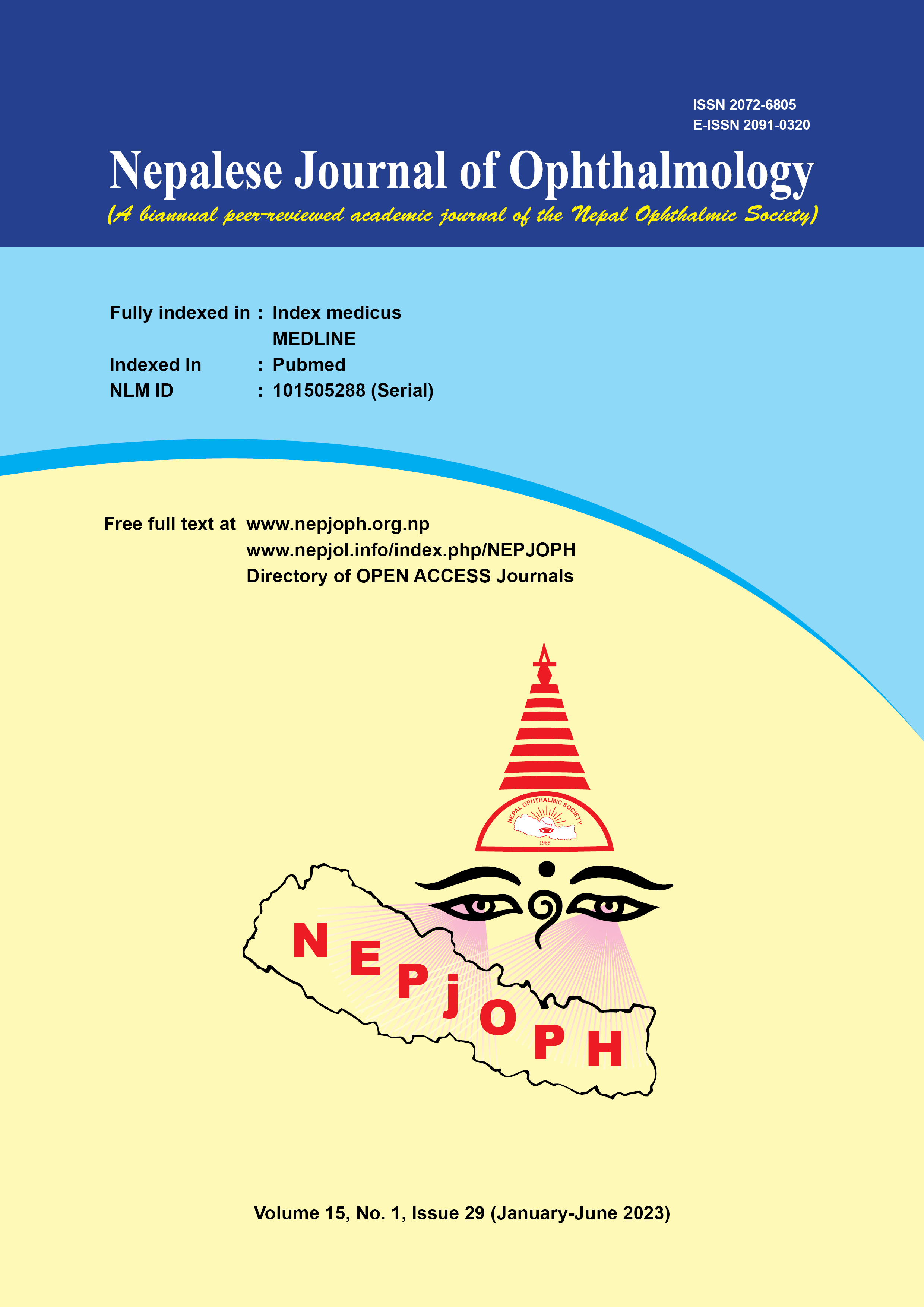Indication and Outcome of Paediatric Keratoplasty at a Tertiary Referral Eye Hospital in Nepal
DOI:
https://doi.org/10.3126/nepjoph.v15i1.50357Keywords:
Amblyopia, Bilateral grafts, Graft failure, Keratoconus, Paediatric keratoplastyAbstract
Introduction: Paediatric keratoplasty is rarely performed surgery with high risk of graft failure. Developing countries have not benefited due to lack of sufficient facilities and trained surgeons.
Objectives: The objectives of the study were to analyze the indications and its outcome in terms of vision and graft survival.
Materials and methods: This retrospective chart review used electronic medical records from January 2017 to December 2019 of all consecutive patients aged upto18 years or below that underwent paediatric keratoplasty after ethical approval at Tilganga Institute of Ophthalmology. Outcome was defined as anatomical or visual success and graft clarity. Different demographic and surgical parameters were studied among 59 eyes of 48 patients.
Results: Mean age of recipient was 12.23± 3.81 years. Majority 37 (52.5%) had unilateral grafts with keratoconus being the most common 24 (40.6%) acquired non-traumatic indication. Mean post-operative best corrected visual acuity 0.6 Logmar was significantly (p <0.001) low as compared to preoperative 1.3 Logmar. Overall graft survival rate was 47 (78%) at one-year follow-up; keratoconus accounting for 24 (100%). Major factors in contributing for graft failure were rejection, infection, and glaucoma.
Conclusion: A good outcome in terms of anatomical and visual success was achieved in our study. Keratoconus has an excellent graft survival. Visual rehabilitation by cycloplegic refraction should be done to prevent amblyopia. Enhancing the training of surgeons and addressing challenges faced in a paediatric population will help decrease corneal blindness among paediatric patients in the future.
Downloads
Downloads
Published
How to Cite
Issue
Section
License
Copyright (c) 2023 Nepalese Journal of Ophthalmology

This work is licensed under a Creative Commons Attribution-NonCommercial-NoDerivatives 4.0 International License.
This license enables reusers to copy and distribute the material in any medium or format in unadapted form only, for noncommercial purposes only, and only so long as attribution is given to the creator.




